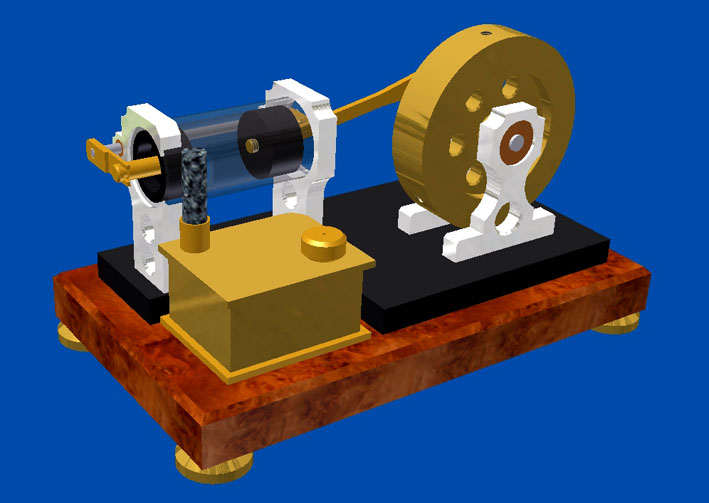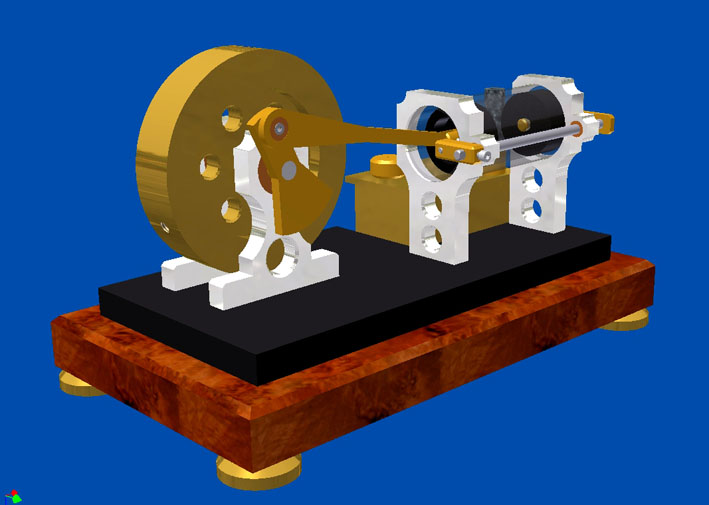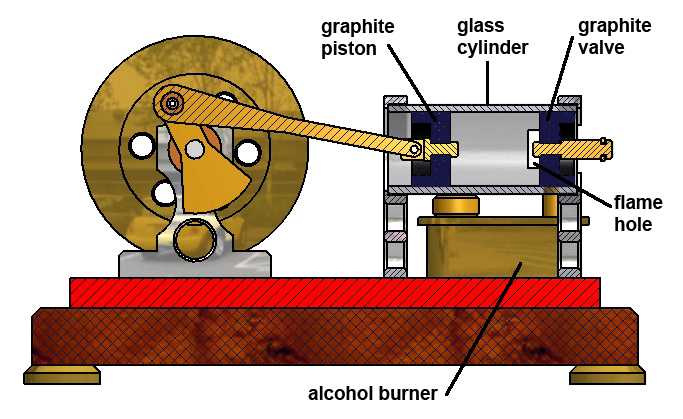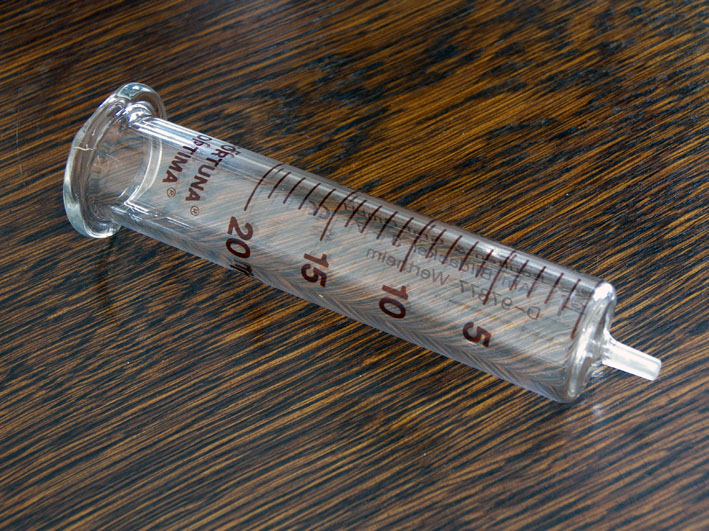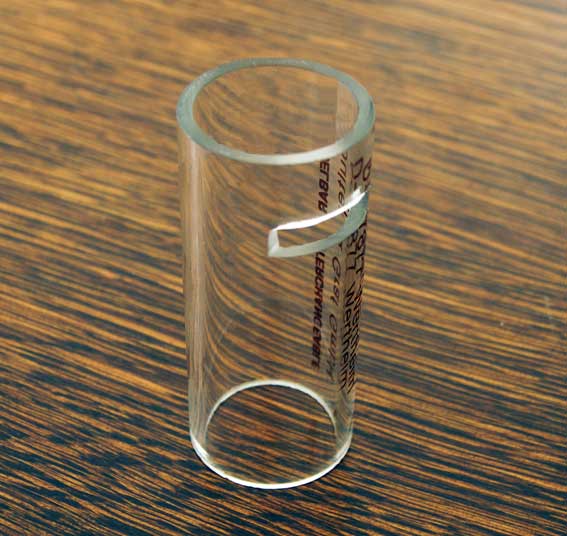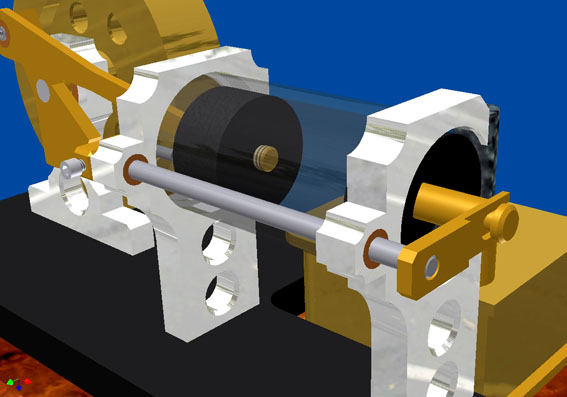Introduction.
Recent years I have designed and made several flame-eaters, see the respective overview. Fore sure flame-eaters are attractive models for model builders because they are relatively easy to make with little and well manufacturable parts.
However, flame-eaters suffer almost without exception to a common drawback: internal corrosion (rust) that is caused by the sucked-in hot and humid flame gases in the cylinder at each cycle. The result is an increase in friction between the piston and the cylinder wall through which the motor gradually get slower to run and finally even will not start at all.
Depending on the materials applied for the cylinder and the piston one must clean the cylinder bore and the piston more or less frequently for what the engine must be partially dismantled. Except that this is a nuisance it causes sometimes an inadmissible clearance between the piston and the cylinder bore due to the repeatedly removal of the corrosion layer. In particular, small flame-eaters have a comparatively low power so that this corrosion relatively quickly leads to a not running engine.
I wanted to settle once and for all with this problem where I realized that this was only possible only by using materials for the piston and the cylinder that does not corrode at all under these conditions. Supported by my good experiences with glass cylinders and graphite pistons for internal combustion engines (see eg. 1-Cylinder 4-stroke, 2-cylinder 4-stroke and Hybrid 2- 4-stroke) I conceived the idea to design a flame-eater with a glass cylinder with a piston and an internal valve therein, both made from graphite. Glass and graphite don't corrode under these circumstances and the self-lubricating graphite piston continues to run virtually frictionless in a super sleek glass cylinder without any lubrication if it is made nicely fit in it. This self-lubricating property of graphite is also an important advantage because lubrication with oil is not advisable with flame-eaters because that oil will burn quickly in the cylinder, leaving residues against the cylinder wall and the piston with fatal frictions as a result.The design
All flame-eaters have an opening in the cylinder wall through which the hot flame gases of a alcohol burner are sucked in. This flame hole must be opened and closed at the right moments in the process and that is almost always done by an external flat slide that moves up and down against the flame hole. Because a glass cylinder has a round surface such a constuction with a flat slide is not possible. However, I have earlier made a flame-eater with an internal slide where the flame hole is sealed to the inside of the cylinder, see the relevant page. In fact this slide valve is a second piston which moves across the flame hole by means of a pusher rod which is operated by the working piston. For an animation of this process see at the top right of this page.
This concept thus makes it well possible to make a flame-eater with a glass cylinder. The CAD figures below illustrate this unique flame-eater design:
The elaboration of the concept.
1.De glass cylinder.
As I did before with some of my IC engines I cut the cylinder from a glass syringe, type "Fortuna Optima 20ml"; fabricated by POULTEN & Graf, Germany, see picture below:
The tolerance of the inner diameter thereof is extremely small (+/- 0,01mm!) which is necessary to be able to create therein a substantially leak-proof graphite piston and slide valve.
By chance I could obtain some of that glass syringes a good fellow modeller, so till now I myself I did not purchased one from a supplier. You can find several suppliers on internet by typing "Fortuna Optima syringe 20ml" on Google Search. Some examples:
POULTEN & Graf GmbH has offices in Germany and England; see
https://shop.poulten-graf.de/Spritzen/Ganzglas-Spritzen/
Art. No. 710 241.; 8:47 Euro plus VAT
Sigma Aldrich
20ml Z314366-10EA
Luer glass style; 10:50 Euro
http://www.sigmaaldrich.com/technical-service-home/product-catalog.html
Fiers, Belgium:
https://www.fiers.be/nl/producten/laboratoriumbenodigdheden/pompen-pipetten-monstername/spuiten-en-toebehoren/glazen-spuiten-met-glazen-conus-en-luer-aansluiting
Article. No: C681.1
This borate silicate glass tube has an inside diameter of 19.60 mm with a tolerance of 0.01mm or even less; the wall thickness is 2mm. It is a little pity that I could not remove the brown printing on the glass by no violence; presumably it is firmly etched-in. But that is not really disturbing in my opinion.2. Cutting the cylinder and make the flame hole in it.
The nicely sawing at right angles, and especially the making of the flame hole in the cylinder wall is a rather special trick. Partly due to the relatively thick wall, this is only well to do with a diamond grinding disc in e.g. the Dremel rotary tool. I myself made for this kind of work a special but simple arrangement with what I do this job easy and perfect; see the relevant page on this web site.
Somewhat to my pleasant surprise it shows that the mechanical strength of this borate silicate glass at the location of the flame hole is not to be affected by the grinding work at all. More importantly in this case was that it also withstand the hot flames of the alcohol burner near the flame hole and this was of course a precondition for the use of a glass cylinder for a flame-eater.
3. The cylinder support.
The cylinder is located between two aluminum supports and in only one of them it is glued with 2-component adherance on the side that is not heated by the flame of the alcohol burner. The circular chamber in the other support has a somewhat larger diameter than that of the glass cylinder in order to prevent that the cylinder will come under tension when the two supports would not be aligned exactly on the mounting plate.
Doing so the only force that is exerted on the glue connection is caused by the friction between the graphite piston and the glass, but this it is negligibly small. Therefore, there is absolutely no chance that this bonding will collapse if the engine is running.
4. The valve pushing mechanism.
The picture above shows the valve pusher which is a 3mm steel shaft that can slide in two bronze bushes in the two aluminum cylinder supports. On one side a driver for the slide valve is soldered. On the other side there is a stop pin which is screwed on to this shaft. Shortly before the piston is in its extreme back position it touches this stop pin, pushing the slide valve over the flame hole. At that time, the flame gases are trapped in the cylinder and cool down against the wall which creates a partial vacuum in the cylinder. The excess pressure of the outside air drives the piston in the flame hole direction which provide the engine work power.
A little before the piston reaches the flame hole again the cooled flame gasses are compressed to atmospheric pressure causing the slide valve to open the flame hole just enough to let the flame gasses escape to the outside atmosphere. This construction thus automatically ensures that there can not occur a counter-acting overpressure in the cylinder. When the piston moves further in the direction of the flame hole it pushes the sliding valve all the way to its extreme position whereby the flame hole is entirely opened again and the process repeats itself because of the flywheel effect. The animation below illustrates this unique process:
Engine performance
This flame-eater starts immediately after a slight manual push to the flywheel. During the first minutes, there is some visible water condensing in the cylinder, but this disappears as soon as the cylinder which is warmed up a little. Thereafter, the engine is running flawlessly with a genteel pace of 400 to 500 RPM. The speed is mainly limited by the fact that the piston and the slide valve continuously make mechanical contact which is clearly audible with fairly prominent tapping sounds. I personally like this " tough" behaviour of this still very small model.
There is no preference for the direction of rotation.
I have achieved what I really had in mind: one hundred percent confidence, absolutely no corrosion or other contaminants into the cylinder or the piston or slider and, as a result, absolutely no maintenance required any more!
Although pure alcohol (96-98%) may be preferred because of the somewhat hotter and cleaner flame this flame-eater also runs very well with standard blue household spirit, which is also an advantage because pure alcohol is usually somewhat more difficult to obtain.
CAD drawing plans.
I have made a CAD drawing package for this flame-eater that is freely available for everyone interested; click here for a request.
Process animation:
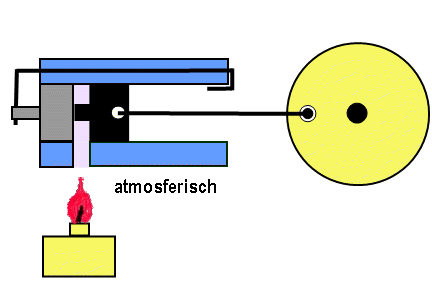
Video:
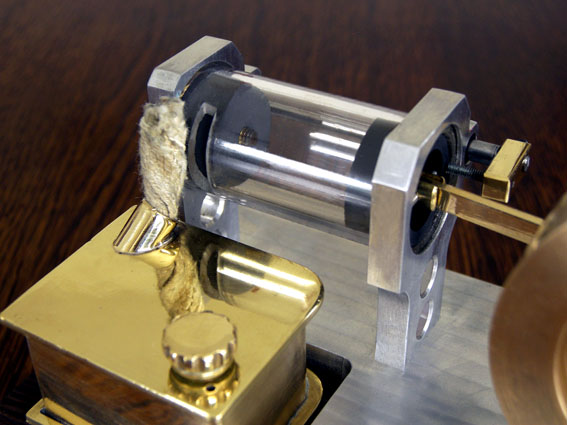
Very nice replica made by
Ben Trueblood:
